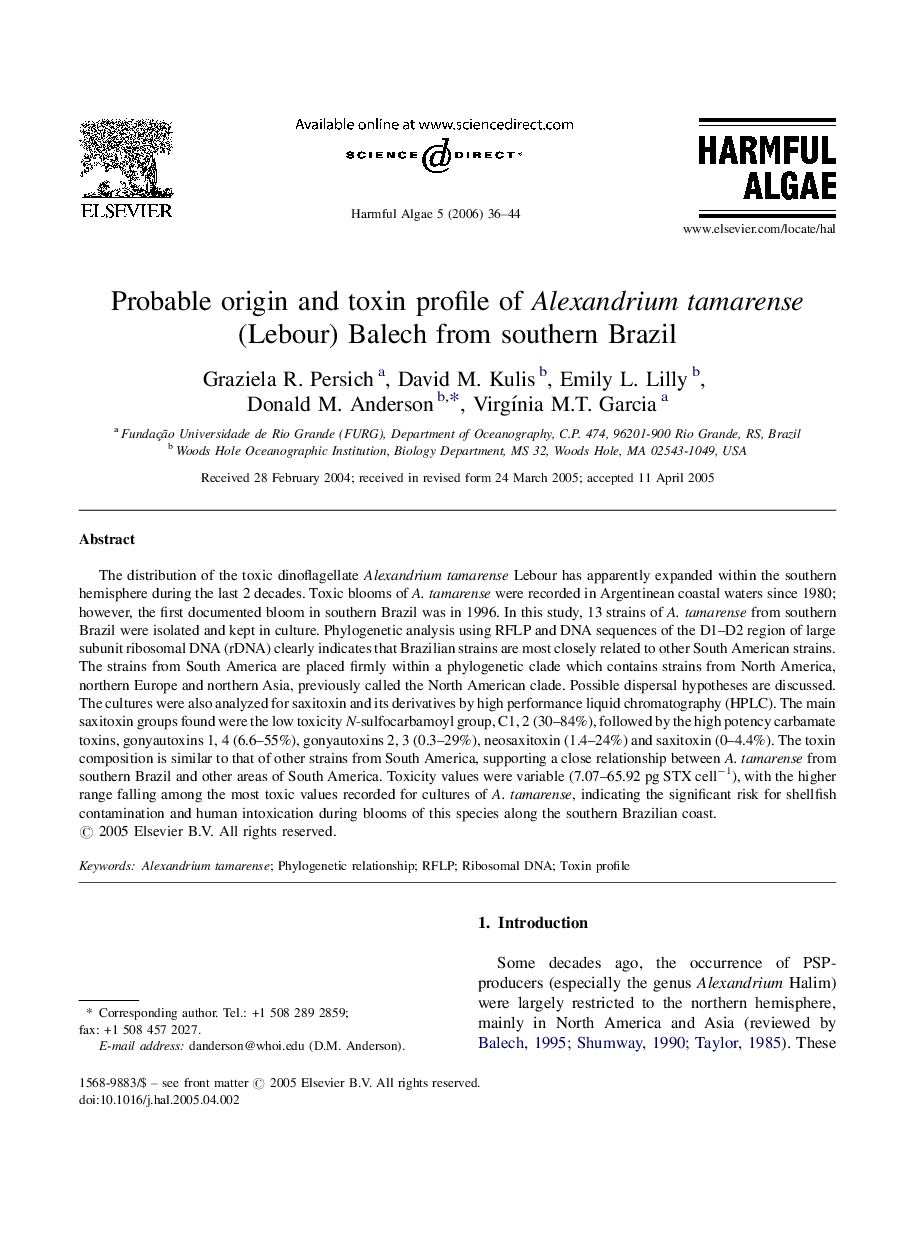| Article ID | Journal | Published Year | Pages | File Type |
|---|---|---|---|---|
| 4546237 | Harmful Algae | 2006 | 9 Pages |
The distribution of the toxic dinoflagellate Alexandrium tamarense Lebour has apparently expanded within the southern hemisphere during the last 2 decades. Toxic blooms of A. tamarense were recorded in Argentinean coastal waters since 1980; however, the first documented bloom in southern Brazil was in 1996. In this study, 13 strains of A. tamarense from southern Brazil were isolated and kept in culture. Phylogenetic analysis using RFLP and DNA sequences of the D1–D2 region of large subunit ribosomal DNA (rDNA) clearly indicates that Brazilian strains are most closely related to other South American strains. The strains from South America are placed firmly within a phylogenetic clade which contains strains from North America, northern Europe and northern Asia, previously called the North American clade. Possible dispersal hypotheses are discussed. The cultures were also analyzed for saxitoxin and its derivatives by high performance liquid chromatography (HPLC). The main saxitoxin groups found were the low toxicity N-sulfocarbamoyl group, C1, 2 (30–84%), followed by the high potency carbamate toxins, gonyautoxins 1, 4 (6.6–55%), gonyautoxins 2, 3 (0.3–29%), neosaxitoxin (1.4–24%) and saxitoxin (0–4.4%). The toxin composition is similar to that of other strains from South America, supporting a close relationship between A. tamarense from southern Brazil and other areas of South America. Toxicity values were variable (7.07–65.92 pg STX cell−1), with the higher range falling among the most toxic values recorded for cultures of A. tamarense, indicating the significant risk for shellfish contamination and human intoxication during blooms of this species along the southern Brazilian coast.
